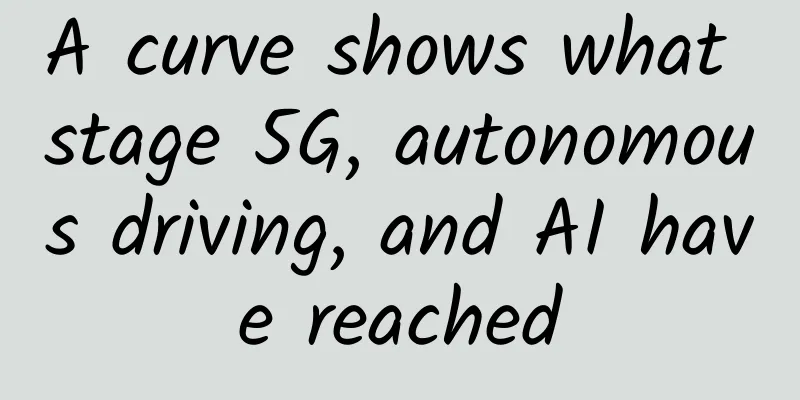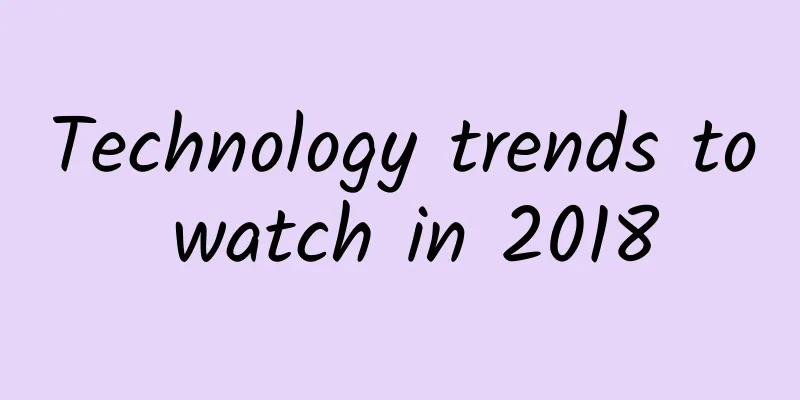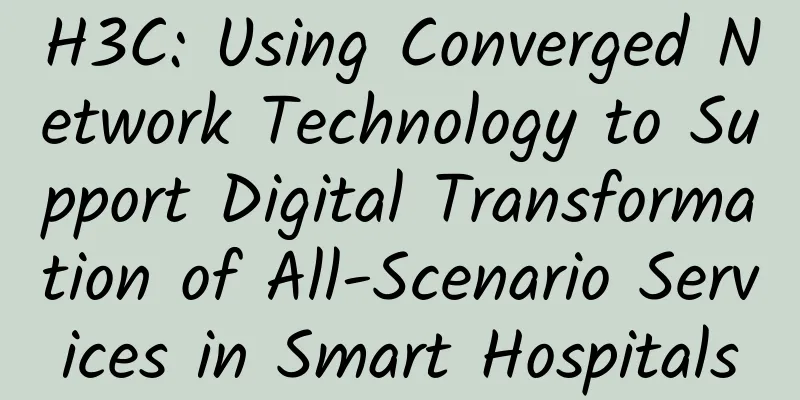A curve shows what stage 5G, autonomous driving, and AI have reached

|
Recently, Gartner, a world-renowned IT market research and consulting company, released the 2019 Hype Cycle for new technologies. Simply put, this is a curve that describes how social expectations change over time after the emergence of new technologies. It can show the degree of deviation between the market popularity of new technologies and actual development, thereby helping companies better utilize mature technologies and find potential opportunities. Gartner designed this analysis tool as early as 1995. Combining the judgments of analysts, experts and industry professionals, they drew a curve with ups and downs to list the most anticipated and commercially promising new technologies of the year and predict how long it will take for them to mature. The Gartner curve is composed of two superimposed curves, one is the "hype level" curve that reflects the public's inflated expectations of technology, and the other is the engineering or business maturity curve. Basically, new technologies that throw concepts and "tell stories" will be enthusiastically sought after by the media at first, but once they are verified by the market, the bubbles previously promoted by the new technology will slowly be blown away, and then enter the "high opening and low closing" stage, and then gradually climb to the maturity stage. The Gartner curve is composed of two curves superimposed | Gartner From the coordinates, the Y-axis represents people's expectations for new technologies, while the X-axis corresponds to time. From left to right, there are five stages: "trigger period", "expectation expansion period", "trough period", "recovery period" and "maturity period". In addition, each technology is marked with the number of years required to reach production maturity. 2019 New Technology Hype Cycle | Gartner This year, Gartner selected 29 technologies from 2,000 and summarized the top five innovative technology trends that enterprise decision makers should consider. Brian Burke, vice president of research at Gartner, pointed out in an interview with CIO Dive that "artificial intelligence permeates all other trends." Five prominent trendsSensing and Mobility As sensing technology and AI advance, autonomous robots will be able to better understand their surroundings. The sensing and mobility trend is characterized by the increasing ability of machines to move and manipulate objects, such as 3D sensing cameras that collect large amounts of data, and AI that can understand and apply this data in various scenarios. For example, light-cargo delivery drones will be able to better navigate and manipulate goods. In addition, companies betting on this technology trend should also consider augmented reality cloud, flying autonomous vehicles, and autonomous driving Levels 4 and 5. Augmented Human "(Human capability augmentation) is not about replacing human decision-making, but providing guidance when they perform tasks. This augmentation is like giving humans prosthetic limbs, both physically and cognitively," Burke said. This augmentation technology includes biochips and emotion AI. Among them, emotion AI is being used in insurance fraud detection. Unlike the previous combination of claim analysis, computer programs and manual detection, with emotion AI, insurance companies can complete the detection through the caller's statement. This trend also includes personification, augmented intelligence, immersive workplaces and biotechnology (cultured or artificial tissue). Postclassical Compute and Comms For decades, classic core computing, communications, and integration technologies have developed rapidly by improving traditional architectures, resulting in faster CPUs, higher storage density, and increasing throughput. Classic computing and communications will then use completely new architectures. For example, the next-generation cellular network standard 5G will rely on core slicing and wireless edge, and these new architectures will promote a series of incremental technological improvements - enabling low-earth-orbit satellite systems to operate at an altitude of less than 1,200 miles from the ground. They will radiate to 48% of users who currently do not have access to the network, which will have a huge impact in terms of social significance and economic benefits. In addition, post-classical computing and communications also include technologies such as next-generation memory and nanoscale 3D printing. Digital Ecosystems Enterprises should break through the limitation of focusing only on their own industrial chain and share and cooperate with more enterprises, people and things across industries. The digital ecosystem is breaking down this traditional value chain and developing more seamless and flexible connections. Therefore, enterprises will look for solutions on the blockchain. Key technologies that enterprises can consider include DigitalOps, knowledge graphs, synthetic data, decentralized web, and decentralized autonomous organization. Advanced AI and Analytics Advanced analytics uses more sophisticated tools to automatically or semi-automatically examine data or content, and is often beyond the scope of traditional business intelligence (BI). For example, transfer learning focuses on storing existing problem-solving models and using them on other different but related problems. For example, a model used to identify cars can also be used to improve the ability to identify trucks. This advanced analysis can provide deeper insights, predictions, and recommendations. Other new technologies that fall on the Gartner curve include adaptive machine learning (adaptive ML), edge artificial intelligence (edge AI), edge analytics, explainable AI, artificial intelligence platform as a service (AI PaaS), generative adversarial networks and graph analytics. AI continues to penetrate all industries In this year's Gartner curve, autonomous flying cars, L4 and L5 autonomous driving, biotechnology, biochips, knowledge graphs, edge AI, AI PaaS and 5G overlap with last year. Among them, 5G has entered the expectation expansion period this year, and it is still 2-5 years away from technological maturity. Also entering this period are edge AI, low-Earth orbit systems, L5 autonomous driving, edge analytics, AI PaaS, biochips and chart analysis. The next generation of storage, 3D sensing cameras and L4 autonomous driving have slipped into the trough period, among which the latter is marked as more than 10 years away from technological maturity. 2018 New Technology Hype Cycle | Gartner In addition, this year Gartner put 21 new technologies on the curve, "eliminating" technologies such as the Internet of Things and blockchain, which fell into the expansion period last year. "This year Gartner will focus on the embodiment of new technologies," commented Computerworld, a foreign media, "but this does not mean that 'old' technologies are no longer important." For example, the Internet of Things is "decomposed" into branch technologies such as 3D sensor cameras, and blockchain technology is embodied by technologies such as distributed autonomous organizations. What remains unchanged is that this year's Gartner Hype Cycle still emphasizes the reshaping of enterprises by AI. Gartner's vision for the future is that by 2029, leading companies in all major industries will use advanced analytics and automation to augment their workforce. These companies will also use blockchain to collaborate with multiple parties in complex digital ecosystems, and use sensor technology and next-generation computing to maximize efficiency, thereby standing out from the fierce competition. Brian Burke, vice president of Gartner Research, said in an interview with CIO Dive that "artificial intelligence permeates all other trends." AI can more finely sort through massive amounts of data, provide decision support, replace some manpower, and promote the development of other technologies. There is no doubt that AI will have a huge impact on the development of business. But in terms of leveraging AI, companies first need to overcome the following obstacles: "The key to making any AI solution work is computing power, algorithms, massive data and employees who are proficient in using AI," said Soumendra Mohanty, executive vice president of IT company L&T Infotech. According to Gartner data, AI will create 2.3 million jobs by 2020. At the same time, 50% of organizations will lack relevant AI and data analysis talents. |
<<: Popular science article: What exactly is 5G technology?
>>: What does the battle for AI spectrum mean for 5G?
Recommend
How Industrial Private 5G Can Help Enable Sustainable and Agile Industrial Operations
For the past few decades, wireless communication ...
[6.18]DogYun: Top up 100 yuan and get 10 yuan, 30% off for Dynamic Cloud, 20% off for Classic Cloud, 100 yuan off for Dedicated Server per month, up to 50% off for Lucky Wheel
DogYun is a Chinese hosting company established i...
SD-WAN and Operations
Software-defined WAN or SD-WAN is a great example...
Interview: ZooKeeper 23 questions, see if you can answer them
1. What is ZooKeeper? ZooKeeper is a distributed,...
Cybersecurity risks of smart devices
Many people don’t consider the risks that smart d...
RackNerd: AMD Ryzen series promotion starts at $18/year, Dallas/Seattle/New York and other data centers
RackNerd has once again released a promotional pa...
Brazil: No Huawei in 5G bidding requirements
According to foreign media reports, Brazilian Com...
DogYun (Dog Cloud) offers a 100 yuan discount on all independent servers per month, and Hong Kong servers start from 300 yuan per month
DogYun is a Chinese hosting company established l...
10 IT skills that are getting paid the most today
From ERP and compliance to data visualization, th...
Under heavy pressure, the three major operators began to take the road of competition and cooperation
Today, with the increasing homogeneity of the fiv...
Do you understand these IPv6 issues?
[[348221]] 1. We are currently using IPv4 network...
China leads the world in quantum technology patents
[[388060]] Quantum technology has become the comm...
RepriseHosting: $25.97/month-L5640, 16G memory, 1TB hard disk, 20TB/1Gbps, Seattle data center
This is a promotional activity released by the me...
These 22 IoT terms will make others worship you just by saying any one of them
Improve your chat style and enter the IoT circle ...





![[Black Friday] SaltyfishTech: 499 yuan/year-4 cores/4GB/50G SSD/1TB@150Mbps/Germany 9929 line](/upload/images/67cabce9d3b53.webp)



